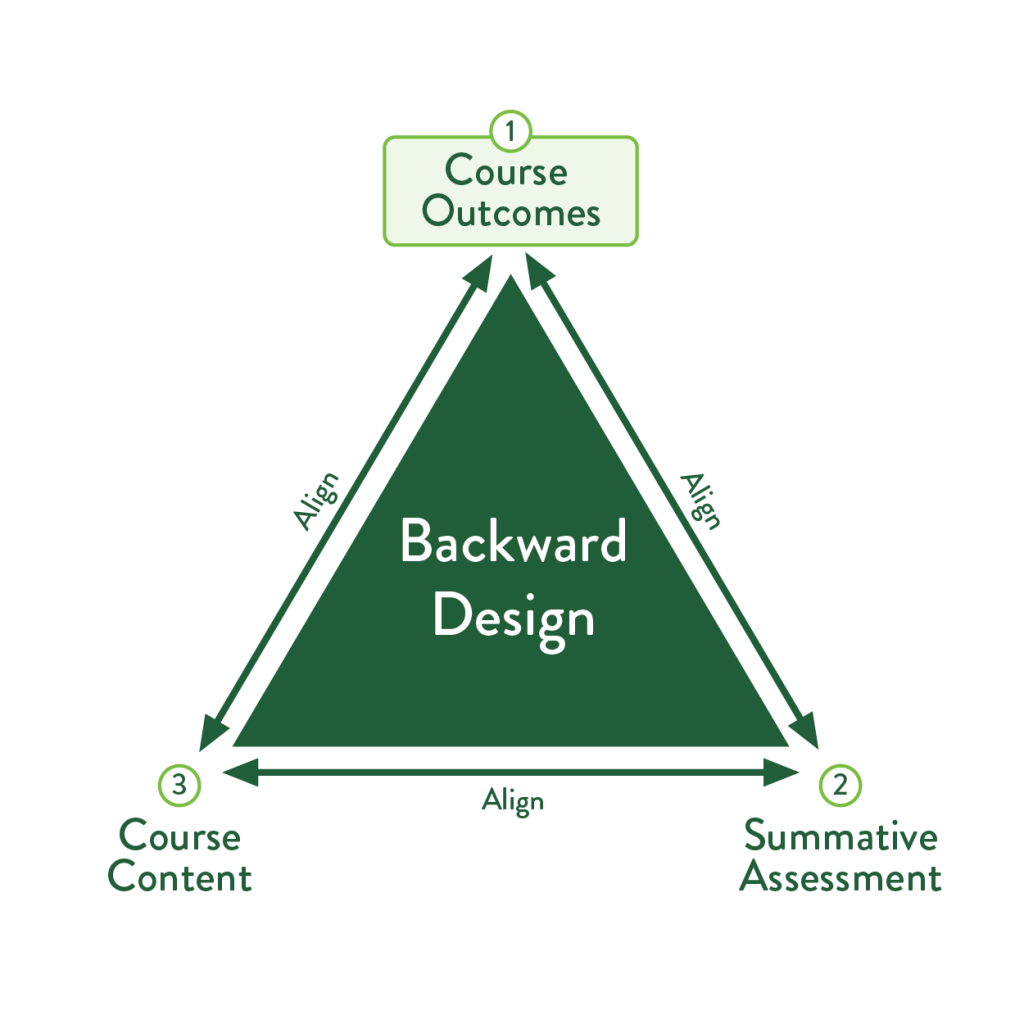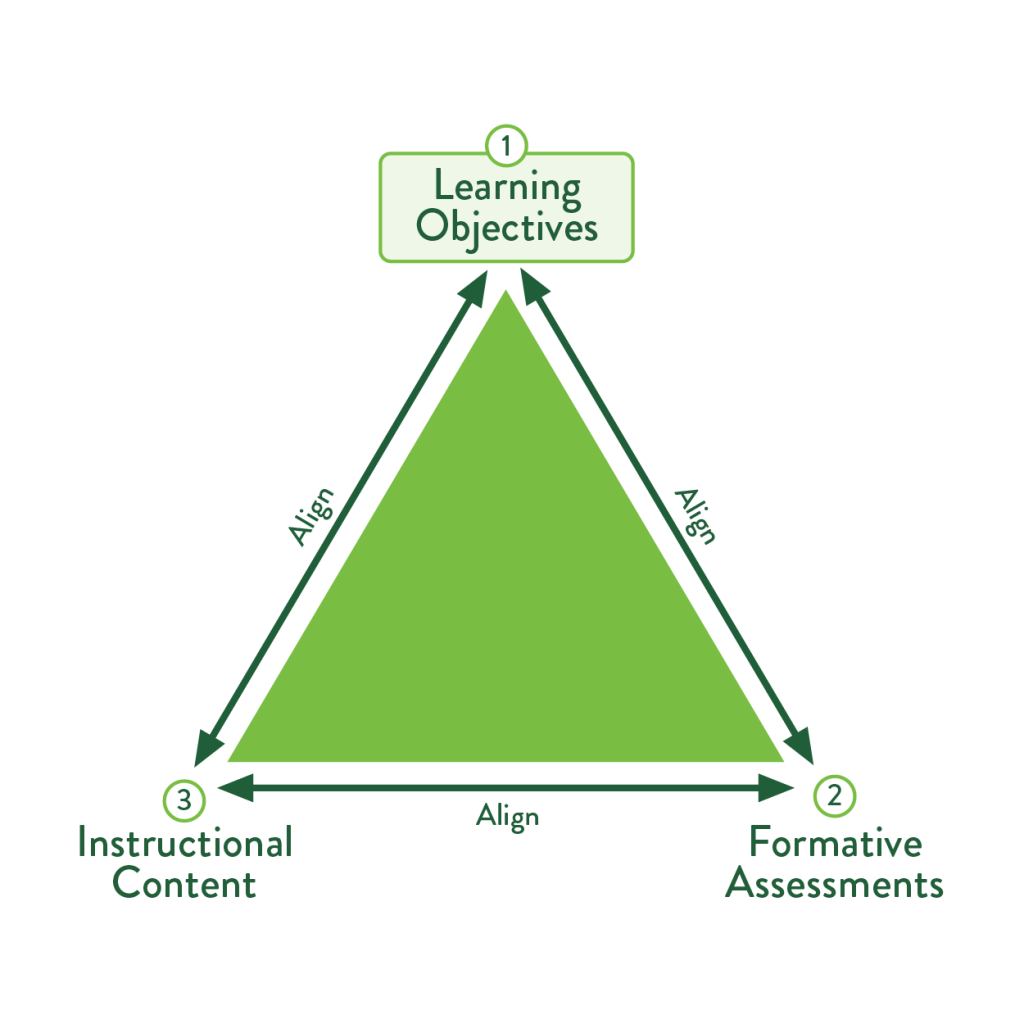2 Course Outcomes: Step 1 of Backward Design
Course Outcomes: Where Do You Want to Go?

Contrary to what you might expect, you need to start at the very end of your course and determine your course outcomes. This is the first step of Backward Design.
Course outcomes tell you what your students will be able to do at the end of the course. They describe broad aspects of behavior and incorporate a wide range of knowledge and skill.
If you are designing an existing UVU course, you can find your course outcomes in UVU’s CourseLeaf. The CourseLeaf outcomes are approved by the curriculum committee for your college. If you do not have access to CourseLeaf, please contact your department curriculum representative. If you do not know your department curriculum representative, contact your Department Chair.
If you are designing a non-UVU course, you will need to create your own course outcomes.
When developing a course, just as you do when planning a trip, you need to know exactly where you intend to go and the specific indicators that will demonstrate your successful arrival.
Imagine you are planning a trip to Paris. How will you know when you arrive? What will you see to indicate you are definitely in Paris?
Well, that depends on where you want to go.
Both structures shown in the following images are in Paris, but one building is in Paris, France, and the other building is in Paris, Idaho.


Both structures are beautiful examples of impressive architectural design. But if you’re not careful with your planning, you may not end up where you originally intended.
So where do you want your students to go?
Course Outcomes vs. Learning Objectives
Course outcomes describe the broader aspects of student behavior—what students should be able to do or demonstrate at the end of a course.

Learning objectives are narrower in scope. They are those things students should be able to do upon completing a particular module or unit within your course.

Course Vision
Once you know where you want to go, what do you hope the trip will be like? What do you hope your students will come away with that they can articulate a few years from now? This is your course vision, and it is driven by your course outcomes and learning objectives. As you design your course, keep your course vision in mind. It will guide you in creating assessments, content, and activities.
Continuing with our Paris example, if your outcome is Paris, France, your vision might be for students to experience Paris more as a native than as a tourist.

Exercises
If you would like to complete your Course Design Plan as you go, your assigned instructional designer can help you do so as you work through each part of the Foundations of Course Design experience. Otherwise, you can complete the plan at the end. The following links contain instructions for the first 2 sections, beginning the first step of the Backward Design process, in the Course Design Plan:
